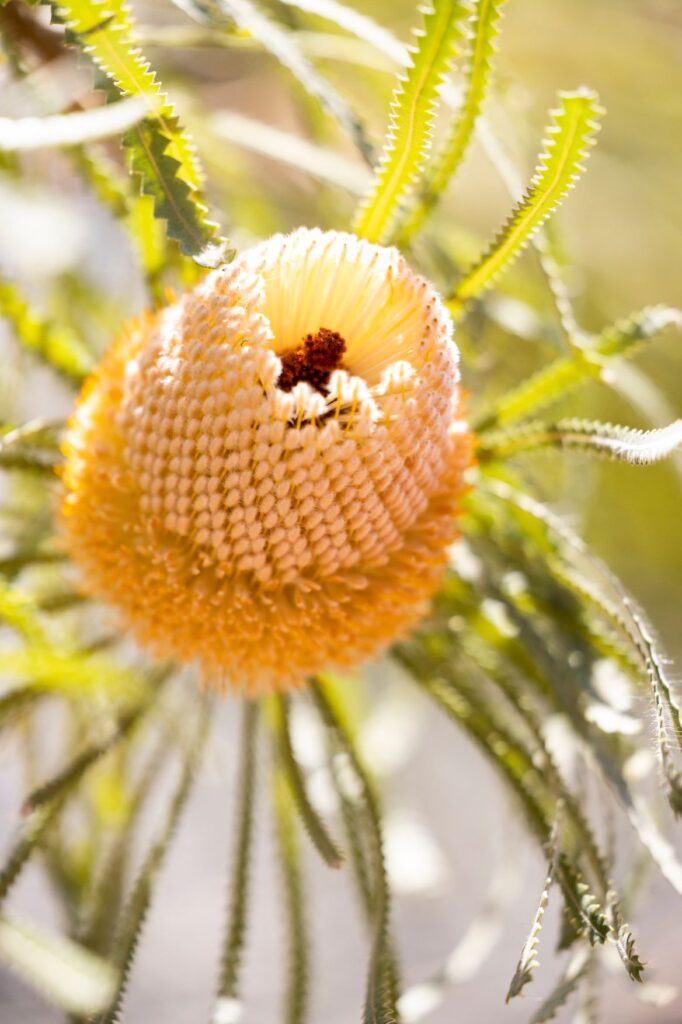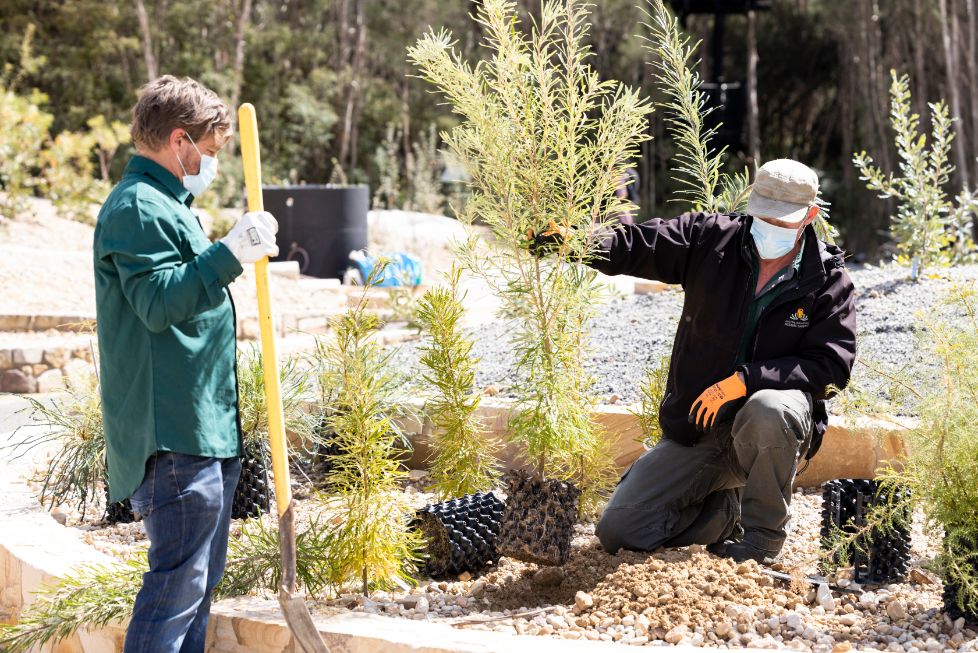In a year marked by smokewaves, a hailstorm and pandemic restrictions, the Australian National Botanical Gardens is celebrating its 50th anniversary by creating a new garden dedicated to one of Australia’s most beloved and iconic wildflowers, the banksia.
“They’re so tactical and textural and you can see throughout the garden we’re not just planting plants here, we’re using the leaf shapes and motifs all throughout the walls and the structures because they’re so engaging,” the Gardens’ curator of living collections, Dave Taylor told Canberra Daily.
Scattered amongst the garden’s various decorations include a rusted corten steel wall feature that resembles an iconic Australia Post stamp, and even a nod to May Gibbs’ iconic Banksia Men.
The Banksia Garden celebrates its namesake by showcasing a wide selection of the over-170 species spread across the coasts and hinterland of most of mainland Australia and Tasmania.
“The garden really reflects banksia from all across the country, including species from Kakadu in the Northern Territory,” Mr Taylor said.
Canberra Daily visited while Mr Taylor and some of the Gardens’ staff were out planting several of the “really unusual” species from Western Australia that were described as “plants with special needs”.
“They’re typically very hard to grow on this side of the country,” he said.
Some of the measures the Garden’s staff have gone to include creating large mounds for some WA banksias growing on their own roots, with drainage in some places up to 4m deep in very free-draining soil.

“They’re prone to all sorts of root rotting diseases so we have to give them really special requirements to be successful,” Mr Taylor said.
“We have some that are growing from seedlings but have others that have been grafted onto root stocks from the eastern species, which are much more durable and adaptable to the soils here.”
They’ve also created their own pasteurised soils where the steaming process has removed any root rotting pathogens.
“Some people say this is extreme horticulture, but these are plants with special needs,” Mr Taylor said.
It is anticipated that some of the banksias, particularly those from warmer climates like Western Australia and Northern Territory, will also struggle with Canberra’s chilly winters.
Mr Taylor and his team have employed a few measures to ensure they can mitigate the cold by potting some and moving them under shelter in winter, and utilising north-facing walls.
A dry north-facing sandstone wall was built into one of the garden beds and is designed to use the winter sun as a thermal heat bank.
“The front of that wall is the perfect spot for those species that are susceptible to the cold,” he said.
The idea for the garden was conceived about two years ago. Since then, Mr Taylor and his team have been at work developing, planning and then creating the garden with the help of experts from across the country.



